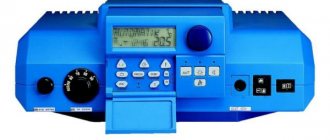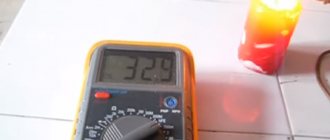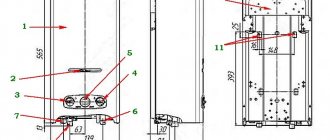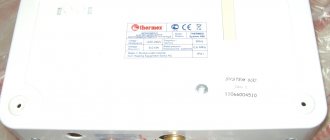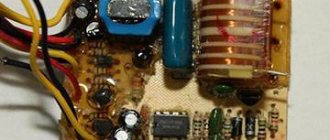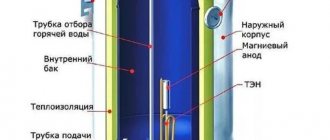The geyser turns off during operation: causes and removal
Turning off a geyser is considered a common failure and can be caused by various reasons, which makes it important to carefully inspect the equipment.
Call us at 922-02-40 to fill out a repair request and preparatory consultation on the cost of repairs.
The specialists of our company, in the process of detailed diagnostics, will definitely find the reason for turning off the gas water heater
and carry out the necessary repair work. We repair gas dispensers with a guarantee.
Turning off the geyser during operation can occur for the following reasons:
? lack of draft in the chimney
since modern gas water heaters are equipped with reverse draft sensors, gas control sensors, which monitor the correct and safe operation of the gas water heater
, when carbon monoxide tries to penetrate into the room, they are triggered and the gas water heater is turned off. At the same time, it must be said that shutdown due to this reason occurs at approximately equal time intervals (2-3 minutes).
In this case, you should check the chimney for the presence of draft.
? strong water heating
Heating water more than 70-80 degrees Celsius can lead to
automated shutdown of the gas water heater
, if it is equipped with a temperature sensor, which provides control over the overheating of water in the heat exchanger.
In this case, you need to reduce the gas supply to the atmospheric burner using the adjusting knob on the column. This can lead to a decrease in water temperature and will eliminate the column turning off.
Due to overheating of water in the heat exchanger, strong pressure may appear, as a result of which the tubes of the heat exchanger will most likely not withstand, which can lead to leakage.
? overheating of the geyser
The basis for overheating of the gas water heater may simply be the lack of air flow in the room due to tightly closed doors and windows (basically, the problem is seasonal and occurs in winter and autumn), which causes the temperature sensor to trigger and the gas water heater automatically turns off.
In this case, you need to open the doors and windows, ventilate the room and turn on the gas water heater again after 15 - 20 minutes. And, if with the window open, the column
does not turn off, which means the problem is insufficient air circulation, the ventilation channels should be checked, since they are considered not only a source of outflow, but also of air inflow in the room.
? malfunction of the control unit
The control unit (or, as it is also called, “brains”) in a gas-powered dispenser plays a rather significant role - it is responsible for the safe operation of the equipment, reading information from all sensors responsible for the operational safety of the dispenser.
If the distribution block is faulty, then heater will not respond to the gas supply, or to the ignition of the pilot wick, in general, it will remain cruelly silent. In this case, the distribution block needs to be replaced.
? lack of constant maintenance of the gas water heater
In order for the equipment to work perfectly, it is necessary to carry out maintenance systematically (at least once a year), which should be carried out by a professional master.
Repair of the Vektor (Vector) geyser step by step with photos
Today we will look at the repair of the Vektor (Vector) geyser. Below I will present the disassembly procedure with photos, step by step, as I do it.
1. Remove the adjustment knobs from the column. There are three of them here. One knob for adjusting the water flow, a second knob for adjusting the gas supply to the burner, a third knob for turning on the mode of full or partial gas supply to the burner (WINTER/SUMMER mode). We unscrew the screws securing the front panel of the speaker from the bottom and top, disconnect the two connectors of the wires going to the display and remove the front cover.
2. Unscrew the bolts securing the strip with ignition electrodes and ionization electrode from the column burner.
3. Find the bolts that secure the water-gas unit to the column body (4 pcs.) and unscrew them. The bolts on the gas unit side can be unscrewed without any problems. On the water block side, the Chinese column is designed in such a way that the bolts are unscrewed from the wall. If you do this on a workbench, then no problem. If the speaker is hanging on the wall, then you will not be able to do this. Either you will have to remove it, or try to unscrew the two bolts that secure the bracket to the water block, which is not always possible, because Usually the water block is wet from condensation and the bolts rust.
4. Unscrew the right heat exchanger tube from the water block (2 bolts on the coupling flange). We unscrew the two screws on the brackets that secure the burner, disconnect the ground wire screwed to the gas block (yellow wire). We disconnect all connectors: microswitch connector, gas valve connector, wires going to the battery compartment.
5. Remove the entire water-gas block from the column along with the burner. It’s also a good idea to unscrew the plug to drain the water from the water block. It is long and will interfere with both disassembly and assembly of the Vektor (Vector) geyser.
6. Now our task is to remove the heat exchanger from the column body. To do this, unscrew the three screws that secure the heat exchanger from below to the rear panel of the column housing, disconnect the draft sensor from the column cap and the temperature sensor from the heat exchanger, unscrew the 2 screws that secure the column cap to the housing (at the very top). All we have to do is disconnect the hot water pipe of the heat exchanger from the body, which is attached from below with two self-tapping screws. The heat exchanger and cap can be removed from the housing. Next, unscrew the 4 screws connecting the column cap and the heat exchanger. The column itself is disassembled into units. Only the ignition unit remains in the housing.
7. Next, we will consider disassembling the water block of the gas water heater. We unscrew the 4 bolts on the body, disassemble the block and remove the membrane. Chinese gas water heaters usually have 2 types of water blocks. This column contains a “large” water block with two “ears” (in common parlance). Usually the column does not light up or heats up poorly precisely because of this membrane. I definitely recommend changing it if you disassemble the water block.
8. There is one more part of the water unit, which I definitely advise you to change, even if it is working properly at the moment. We are talking about the stuffing box assembly of the rod. It is unscrewed from the body of the water block and replaced entirely. No one replaces the rings separately (they are pressed in). This part is a consumable and is often the cause of column failure. Usually, if the stem seal leaks, water drips onto the microswitch, it fails, and the column does not turn on at all. Let's say you replaced only the membrane in the block and decided not to change the rod with the stuffing box assembly. What will happen next? Often events unfold like this: a new elastic membrane begins to work at full strength and push the rod much further than before the repair. Dirt and rust have already accumulated on that part of the rod, which quickly kills the already hardened rubber ring of the oil seal, as if it were being scraped with sandpaper. The oil seal begins to leak and you will have to climb to disassemble the water block of the gas water heater again. And this is not the worst possible scenario! The worst thing is that a rusty rod can seize. Then the column will simply continue to work when you turned off the water (it will not turn off). It's very scary! Although the column is equipped with an overheating sensor, as long as it works, anything can happen. God forbid that only the column will suffer and not be scalded by the steam.
9. I always advise you to change the microswitch too, because it is a consumable and it often fails. It's inexpensive.
10. Assembling the Vektor (Vector) geyser is done in the reverse order. Also, do not forget to rinse the heat exchanger and gas burner before assembly.
Source
Reasons why a gas water heater lights up and goes out
Column
The gas one lights up and goes out after 1-3 minutes.
This problem can be characterized as proper operation of the device’s security system. Let's try to explain. To detect carbon monoxide leaks or to eliminate a rupture of the heat exchanger due to high internal pressure due to a rapid and uncontrolled increase in temperature, bimetallic sensors are added to the design of the geyser .
Bimetallic sensors respond to high temperatures. When heated above the set temperature, two plates in the middle of the sensor repel each other, and the power supply is interrupted - the column switches off in an emergency. It takes 1-3 minutes for the sensor to warm up. A secondary start is possible after the sensor has completely cooled down. There is no need to repair the column on your own in case of this breakdown, since it is not the cause. water heater lights up and goes out after 5-7 seconds. The more often we turn it on, the longer the speaker and does not go out. On the fifth or sixth time it can turn on and heat the water well without turning off. After it cools down, everything is repeated again. This breakdown is typical of a faulty flame ionization sensor. Before changing it, you should try to “tune it”. First you need to check all contacts between the control unit and the sensor itself. Unscrew the retaining screws and place the heating electrode at the much hotter point of the flame. In practical conditions, these actions increase the service life of the sensor by another year.
Column
The gas light comes on and immediately goes out. Repeated starts do not help, the column does not ignite. This malfunction indicates a failure of the mechanism that allows access to gas - the solenoid valve or servomotor. In this case, you should not look for ways to solve the problem through cleaning and maintenance, much less do it “directly” (turn it off). This problem can only be removed by replacing the worn part, in our case the electromagnet.
Other malfunctions of flow-through heaters
In addition to the problems listed above, speaker owners have to deal with the following problems:
- weak sparking, sometimes single discharges slip through, the gas does not flare up;
- ignition is accompanied by a strong bang;
- after closing the DHW valve, the burner continues to operate until the electromagnet cuts off the fuel supply due to strong heating (at the command of the sensor);
- spontaneous ignition after connecting to a power source;
- insufficient heating;
- Water is leaking from the water heater.
Problems with sparking cause popping noises - gas has time to accumulate in the combustion chamber before a sufficiently powerful discharge is formed. If the spark remains weak, the fuel-air mixture ignites when it reaches a high concentration, which is accompanied by a micro-explosion. There have been cases where the pops damaged the heat exchanger, disrupted seals and normal contact in the electrical circuits of the sensors.
Specifics
Vektor gas water heaters have many positive parameters through which the consumer appreciates them. They are affordable, thanks to which almost everyone can afford this type of equipment. Water heating devices have a beautiful appearance, which makes it possible to install them in every room without damaging the overall impression of the interior. The color of the equipment is multi-purpose, thanks to this it will not attract too much attention. The company also made sure that the speakers do not take up a lot of free space, thanks to which they are all miniature in size.
If the Vektor device ever breaks down, it will not be difficult to find the appropriate part. Repairs won't be cheap either. Any of the speakers can be comfortably controlled and configured. New models are equipped with 2 knobs that regulate water and gas supply.
The low price of Vektor gas-powered dispensers is the main reason for their leadership in the Russian market. It is also valued for the following characteristics:
- practicality;
- modern appearance;
- long service life;
- ease of use;
- ease of repair.
Design and working principle
Each water heater is a structure that contains parts, each of which performs its own main function:
- The copper heat exchanger is considered the main element of the device. It contains many hollow tubes. Cold water enters the part, and gas vapors that appear during the operation of the burner heat the water.
- Electric ignition is available in any speaker model. It is intended to simplify the operating process of the device and make it non-hazardous.
- The water-gas unit starts working after the tap opens. It includes three parts: a silumin gas unit, an adapter between units, and a brass water unit. The gas valve begins its own action at the appropriate water pressure. The regulator's task is to monitor the current gas supply, control its quantity and leakage.
- Atmospheric burner. This part of the device is made of stamped sheet. It helps the combustion of the air mixture, as well as its entry into the firebox.
- Gas outlet . It is intended to remove by-products. A specialized meter is built into the gas outlet, which turns off the column if there is no favorable draft. Hot air helps to increase the temperature of the temperature relay; when it opens, it delays the operation of the burner. The chimney is considered another safety measure.
- Thermal sensor is a component of a geyser that protects it from overheating. It is located near the heat exchanger, where peak temperature readings are recorded. As soon as the temperature reaches 80 degrees, the temperature sensor turns off the gas supply.
- The fuse serves to regulate pressure and also drain water from the column.
Column
gas Vektor is a universal device that can perform all the functions assigned to it. The raw material for its work is not only real, but also liquefied gas. To perform ignition, a pressure of 0.2 atmospheres is sufficient.
Thanks to the simple design of the Vektor speakers, they make it possible to maintain the set temperature. Many speakers are equipped with glass panels with any pattern, which allows them to be not only useful in everyday life, but also beautiful on the outside.
Vektor gas water heaters do not have a very large range of models.
A model that became popular a couple of years ago. Its demand is achieved due to its low price, which will not exceed four thousand rubles. This device is small in size, making it considered the best option for small rooms. Thanks to the digital monitor, the process of using the speaker is as simple as it gets. Vektor JSD 20 is sold in several colors: white, gold and silver.
Suitable for installation in a small dining room or bathroom. It is equipped with an automated sensor that monitors the extinction of the flame and is aimed at protecting the heat exchanger from overheating.
It is the newest and newest model of Vektor gas-powered speakers. This model functions similarly to the previous two, but is equipped with a much more advanced security system. The firebox is water-cooled. Thanks to the modernized control system, the client has the opportunity to independently regulate and set the temperature regime. This model is ready for changes in main pressure. The appearance of the device is distinguished by its beauty, which is achieved by the presence of a mirror panel. “Lux Eco” – beautiful, neat and interestingly designed standard equipment for home use.
Reviews from home owners indicate that the speakers work normally and for a long time. Specialized automated parts make her work even easier and more productive. The advantage for the consumer is the built-in clock and informative monitor. People who have purchased such equipment note its good power, which is enough to guarantee more than one water collection point.
Turning on the device
The first step is to install the batteries. To do this, open the battery compartment and install them, observing the polarity. Then you need to open the cold water and gas valves. Open the hot liquid tap on the nearest faucet.
At the moment when the liquid flows through the water unit, a spark ignition occurs and, thanks to this, the burner ignites. If it is turned on for the first time or after a long period of inactivity, air may accumulate in the gas line; in order to remove it, you will need to open the mixer several times, hold it for a minute, and then close it.
If the burner ignites, you need to turn the water pressure adjustment lever (located on the right) to the right, this will make it possible to turn on the Vektor JSD 20 device when the liquid pressure in the system has decreased.
How to install and configure?
After purchasing a gas water heater
you need to take care of its correct installation.
The operation of connecting the device to the main line must be carried out in accordance with the standards and requirements, so the work should be entrusted to specialists. You can do the installation in your apartment yourself. After purchasing equipment, you need to act specifically according to the instructions, because working with gas-powered equipment is quite dangerous. You also need to select the project documentation, and while the registration is underway, you need to purchase spare parts for the work:
- metal connecting chimney pipe;
- pipes and fittings for water and gas supply;
- shut-off valves;
- fasteners to hang the device on a wall surface;
- galvanized steel sheet if necessary.
Hanging the unit on the wall does not require much effort, the main thing is not to violate the distance to household objects. After the fastening process to the wall surface, you need to connect the column to the water wire. To do this, these actions are carried out:
- using fittings, the pipes are connected to the water wire and the column;
- To connect the device, you must use American wires;
- pipes must be mounted on the wall surface to avoid overloading the pipe section;
- the non-flushing filter is installed on the input wiring in a horizontal position and fixed on the wall surface;
- taps should be installed on the connections.
After completing all the above work, you need to connect the gas pipe to the column. To do this, you need the help of qualified employees in this field. They must install the dispenser to the gas main and set up the equipment in advance. The client just needs to make the first start of the column.
To do this, open both taps of the water meter unit, and then hot water on the mixer. You should wait until the water stream is even, and then turn off the water tap. Next you will need to insert the batteries into a special compartment and open the gas tap. If the installation of Vektor equipment was carried out in compliance with all the rules, then after the hot water is opened, the device will autostart. The home owner will only need to adjust the comfortable outlet temperature.
Premises requirements
Installed only in non-residential premises, for example, a kitchen. The instructions for the Vector JSD20 W geyser state that it is strictly prohibited to install it in basements. The room must be heated. Do not allow the temperature to drop below 5 degrees Celsius. If there is a possibility of a decrease in temperature, drain the water from the system.
The following requirements for the room are presented: ceiling height from 2.2 meters, room volume from 8 cubic meters, an opening window and door are required.
How to apply it correctly?
The operating process of equipment that runs on gas has a lot of rules, and only if they are followed, the equipment will last a long time and without interruptions. Also, the safety of people in the room depends on the correct use of this equipment. For ease of use, there are a lot of prompts for the client on the screen.
When you turn on the device for the first time or if it has not been used for a long time, air may accumulate in the gas line. To remove it, you need to open the water tap multiple times and hold it for a minute. If the burner is lit, then the lever that changes the water pressure turns to the right, and the column can be opened in the same way.
To increase the water pressure, the handle responsible for this indicator must be squeezed as much as possible. The left handle, which is aimed at regulating the gas supply, adapts to the desired temperature. If the water is very hard, it is not recommended to set excessively high temperatures; a suitable value is up to 55 degrees.
If there is no need to use the geyser around the clock, then it should be turned off at night; most models have a built-in microswitch. To turn off the device, do the following:
- turn off the hot water;
- shut off the gas shut-off valve;
- close the water supply to the equipment.
Safety rules when using Vektor equipment:
- If you smell gas, turn off the tap, ventilate the room and call the gas service;
- Do not start the equipment in the absence of traction;
- in the room where the speaker
; - It is prohibited to make changes to the design of the device on your own.
What else can you do?
- To increase the temperature of the water flowing from the tap, you can do the following: turn the regulator all the way to the right, then open the water tap only halfway. Since the movement of water will slow down, it will warm up better.
- It would be a good idea to check the pressure in the gas pipes or in the cylinder. But you should not do this yourself - it is better to seek help from professionals.
- The water can remain cool if the faucet adds cold water to already heated water. Compare (by touch) the temperature of the water from the tap with the temperature of the outlet hose. If the water is colder, then the problem is in the faucet.
- If the temperature of the tap water constantly “jumps” and the gas water heater itself periodically turns off, the mixer or filter may be clogged. All these elements, as well as the shower head, should be checked from time to time for the presence of lime and rust deposits.
Breakdowns and ways to fix them
Like any other equipment, the Vektor gas water heater may stop working for some time. This situation is provoked by a number of reasons.
For example, if the device does not start working, but there is a spark. In this case, the following symptoms are usually observed:
- There is no gas supply. To restore it, you need to open the valve.
- Water flows into the system with low pressure. To fix the problem, you can install sediment, which will increase the water pressure.
- The water in the system has good pressure, but loses it when it comes out. Probably, scale has appeared in the heat exchanger. To eliminate the cause, you will need to disassemble the part and clean it.
If the equipment does not turn on and there is no spark, then to eliminate the breakdown, the first step is to inspect the relay and determine the mode set in it. If it is minimal, then switching to maximum is required. An additional reason may be the need to replace batteries.
The device lights up and goes out after a certain period of operation. Reasons for the situation:
- Poor draft, which can be expanded by cleaning the chimney.
- The gas exhaust pipe is dripping at the connection point. In this case, it is necessary to immediately restore its impermeability.
- Triggering of a sensor that controls the temperature. In this case, it is worth reducing the temperature.
If, with the largest gas supply, the water temperature does not heat up to the required level, the problem is caused by the following reasons:
- Clogged heat exchanger. Based on this, the component must be washed immediately.
- Weak gas pressure, which only a gas service can improve.
- Clogged or damaged membrane tissue. To eliminate the breakdown, it is worth repairing the water-gas unit or replacing the membrane fabrics.
- A sharp change in the color of the flame from blue to yellow. It is necessary to check the accumulation of dust and soot in the middle of the burner. If it is found, then the part should be cleaned.
If the gas water heater hums and vibrates during operation, it could be:
- breakdown of the heat exchanger, which needs urgent repair;
- Excessively high gas pressure - if it is reduced, the problem will go away on its own.
If the column does not light up or goes out, there may be several reasons. In this case, the equipment may spark or there may be no spark at all. The reason may be hidden in high water pressure, which should be reduced. There may also be broken parts in the device that should be replaced immediately.
There are many acceptable reasons that can break a Vektor gas water heater. Some problems lie in the middle of the device, others are the result of failures in the water or gas supply, and still others are due to improper use of the device. Like any other home appliance, a gas water heater requires proper and competent installation, configuration and careful handling.
A detailed review geyser is in the video below.
The gas water heater lights up and goes out
The column does not ignite, there is no spark
There may be several reasons why there is no spark and the Vector gas water heater does not ignite:
Lack of draft in the chimney.
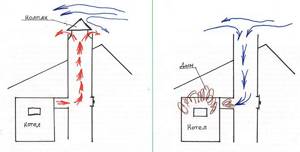
The reason may be as simple as a clogged air duct. You can check the draft in a simple way - bring a lighted candle or match, or a thin sheet of paper to the air duct. If everything is in order with the draft, the flame or sheet will deviate towards the air duct. If not, you need to clean the chimney.
Low water pressure entering the device.

There can be several reasons for low blood pressure. Clogged filter located in front of the water heater water unit. In this case, you need to remove it by unscrewing the nuts and wash it. If the filter is heavily clogged with lime deposits and cannot be cleaned, you will have to replace it.
If you have low water line pressure, then you need to either install a pump or change it to a model that can operate at that pressure. The culprit may also be clogging of the mixer components. To fix this problem, it needs to be disassembled and cleaned. The fourth factor is that the heat exchanger is clogged.
It is necessary to remove the heat exchanger by unscrewing the bolts. Before doing this, you need to turn off all the taps and gas valve under the water heater. Descale it using a special ready-made chemical or regular citric acid.
Membrane failure.
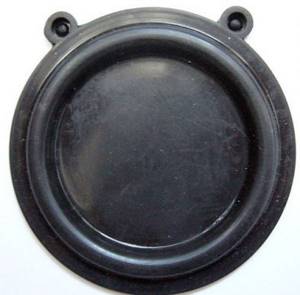
It is located inside the water block. You need to remove the cover from it by unscrewing the screws. There is a rubber membrane under the cover. In working condition, it should not be torn, stretched, or deformed. If any defects are found, the membrane must be replaced. It is better to purchase silicone, as it is more durable. When replacing the membrane, you must be careful not to damage it - first you need to tighten the screws located opposite each other, then the rest.
Dead batteries.
This is the simplest and most common reason. Please note that they may sit down earlier than indicated in the instructions. Replace the batteries.
Oxidation of the battery pack contacts inside the unit itself or the wires.
It is necessary to clean the contacts.
Incorrect handle installation.
The water regulator handle is set to the extreme left position. To get a spark and turn on the water heater, the handle must be moved to the extreme right position.
Oil seal leaking inside the device.
By unscrewing the cap, you can see water dripping from the water valve. The problem is solved by replacing the oil seal with the microswitch.
stock
Insufficient mobility or oxidation of the machine rod.
In this case, it is necessary to remove the microswitch from the housing and release the fixed rod. When souring, it is necessary to clean and lubricate the rod.
The microswitch has failed.
You can determine the breakdown by short-circuiting it. In case of malfunction, the microswitch must be replaced.
The integrity of the electrical circuit between the microswitch and the control unit is broken.
It is necessary to check the contacts of the control unit connector and microswitch wires for rupture and oxidation, and if necessary, eliminate the malfunction by stripping and connecting the wires.
The solenoid valve has failed.
In this case, the valve will have to be replaced.
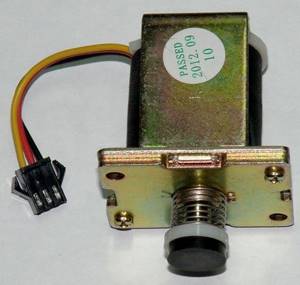
Solenoid valve
The control unit is broken.
Only replacing the block will solve the problem.
